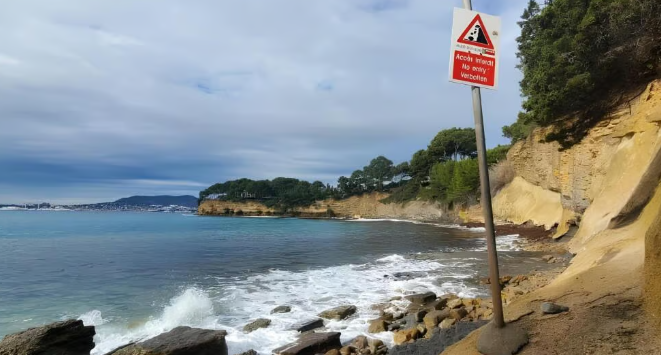Mediterranean Sea Level Rises: A Ten-Year Surge, Our Coasts Under Pressure
The Mediterranean’s water level has risen by 6 centimeters in ten years, causing marine flooding and weakening rocky coasts. Municipalities seem ill-prepared.
It’s the story of an ice cube that, when melting in pastis, doesn’t raise the liquid level. This is the argument that residents of Sète send back to their mayor, François Commenheins, when he explains that they will need to reconsider construction permits and coastal development due to coastal erosion and rising sea levels. « It’s not easy to make them understand that the rise in sea level isn’t directly linked to iceberg melting, but to the expansion of water due to warming, issues of salinity, and tectonic plate activity in the Mediterranean. They see their immediate situation, and we understand them. However, we must look ahead. » And it’s not a promising future.
A Terrace Collapse in Carry
Between 2013 and 2023, the Mediterranean’s level rose by 6 centimeters, according to the Copernicus observatory, eroding beaches and weakening the rocks supporting structures. In La Ciotat, the Liouquet beach is regularly closed due to crumbling cliffs. In Carry-le-Rouet, last year, a property owner saw part of their terrace collapse, along with the rock supporting it, forcing the mayor to call a public meeting in September. Although the national integrated coastal zone management strategy of 2012 and the 2022 Climate Law have raised awareness of these climate-related phenomena, they remain vague for municipalities. Without precise mapping, it’s hard to establish a regulatory framework prohibiting new construction, which forces modifications to local urban planning plans (PLU). It’s also not easy to engage property owners in major works or even relocations when the law provides no compensation.
A Delay, Not a Solution
In Sète, the mayor recommends « emergency exits on coastal homes’ rooftops. Along our 27 kilometers of coastline, we’ve either moved dunes back by 50 meters or put in groynes to reduce wave action, but we’re aware that we are only delaying the inevitable. » Similar concerns are raised in the Saintes-Maries-de-la-Mer, the Salins-de-Giraud, and other municipalities where dikes are increasingly failing to prevent marine flooding.
« Resistance is Strong »
In response to elected officials hesitating to take deconstruction or redevelopment measures, the Regional Court of Auditors (CRC) reiterated its warnings in late January. « The sense of exposure to the threat among coastal residents, as well as sometimes among elected officials, remains insufficient, » the judges note. « Elected officials are aware of this issue, » says Alain Blanchard, General Delegate of the National Association of Coastal Elected Officials (Anel). « But it is not easy to relocate, renature, or revoke building permits; resistance is strong. However, we know that the population density of coastal areas, where one in eight French people live, continues to grow, and studies show its impact on coastal retreat. While the visible impact may seem small, waiting would be disastrous, as the projections are terrifying if we don’t act. »
A Rising Cost
While the cost of coastal erosion is estimated at €1.2 billion annually in Europe, it could increase tenfold by 2050. In Marseille, where a guideline plan has just been published to reshape the coastline in the southern districts, Hervé Menchon, deputy for the sea, notes, « It’s difficult to take accurate photographs of such a shifting space, where sea level rise is just one phenomenon among others. We know that when human pressure eases, like during the Covid period, the pressure on the coasts decreases. It’s a whole model that needs to be reassessed. » It’s expensive now, but it will cost far more if we delay action.
Source: laprovence




